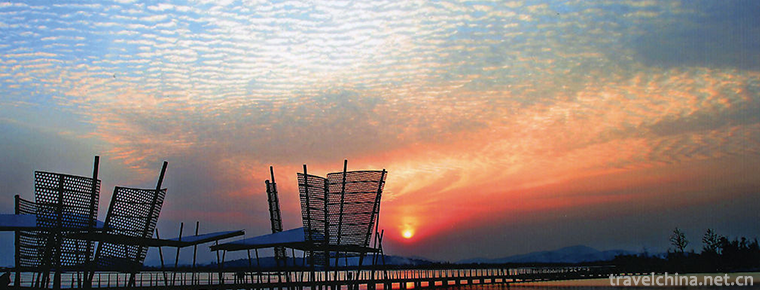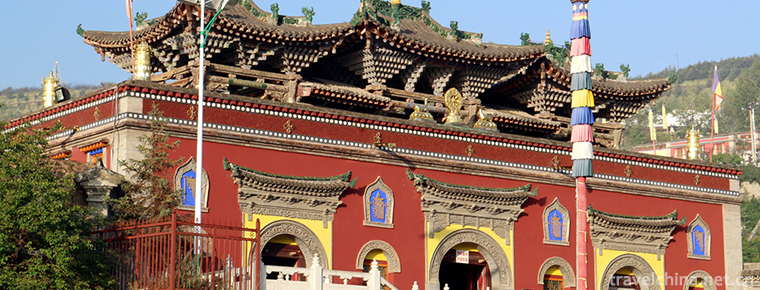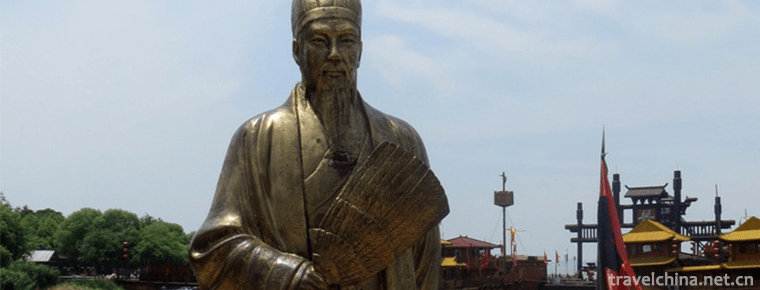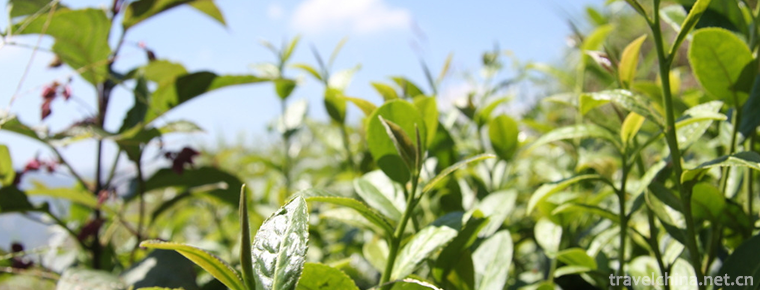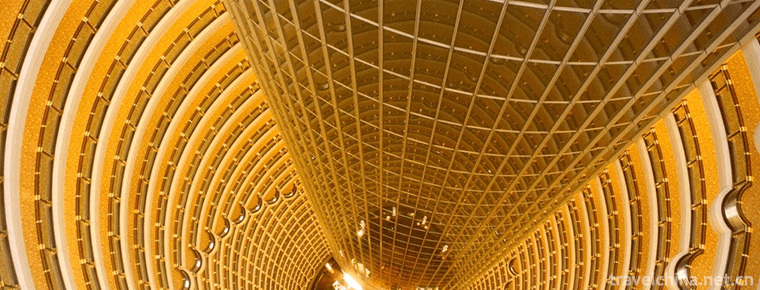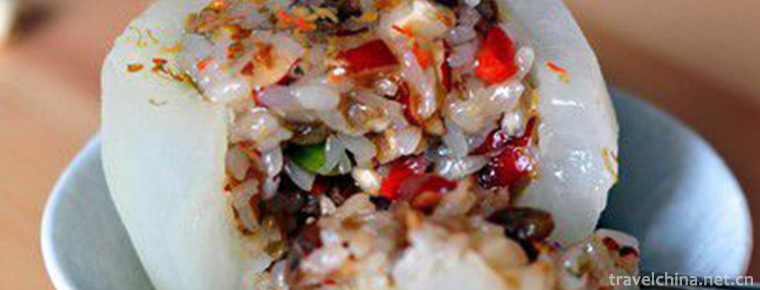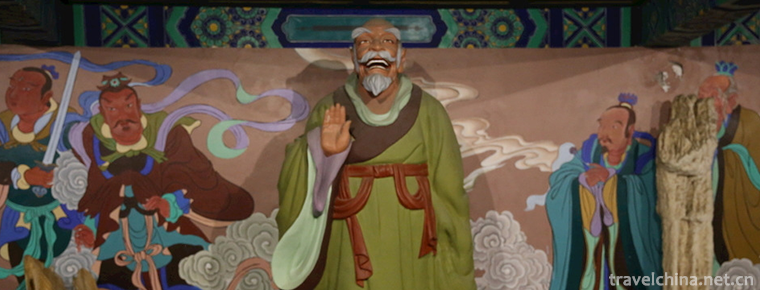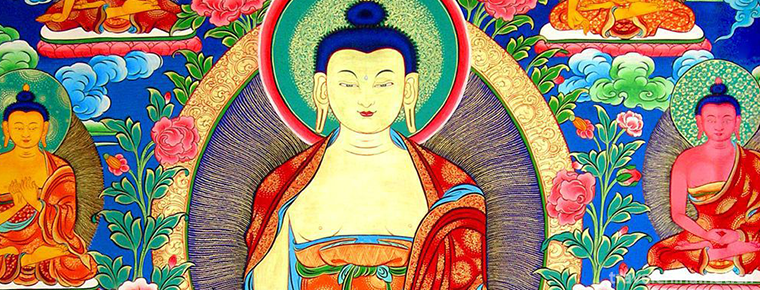Da Yu memorial ceremony
Da Yu memorial ceremony
The Dayu Festival is an ancient Chinese traditional folk sacrificial activity. Dayuling is located in Huiji Mountain, southeast of Shaoxing City, Zhejiang Province. Dayu Mausoleum is the burial place of Dayu, the ancient hero of water control and founder of our country. It is one of the national key cultural relics protection units and one of the hundred patriotic education bases in China. It is a famous historical site in southeastern China. "Yueju Shu Yueju Biography" said: "Yu died of illness, funeral audit." According to the research of dynastic engineering in Xia, Shang and Zhou dynasties, it was 2062 BC when Yu was buried in the council, more than 4000 years ago.
On May 20, 2006, the Dayu Festival declared by Shaoxing City, Zhejiang Province, was approved by the State Council to be included in the first batch of national intangible cultural heritage list (category: folklore; number: _-39) .
historical origin
According to documentary records: in the Yao and Shun times, floods overflowed, and the people suffered greatly, Yu was ordered to water; "Eight years outside, three passes through the door but does not enter", painstakingly and painstakingly, through all the hardships, finally cured the floods; and then the princes of the General Assembly in the auditorium, to calculate merits and awards. After Yu's death, he was buried in Huiji Mountain. After Yu Ziqi assumed the throne, he sent people to sacrifice Yu every spring and autumn and built a temple on Nanshan Mountain. Yu's fifth grandson Shaokang assumed the throne, and sent his uncles to guard Yu's grave and build ancestral halls to settle down. Nowadays, the residents of Yuling village near Yuling are mostly Yong surname, which is the descendants of Yu. Now it has been passed down to 144. Shaoxing has become a sacred place for people to worship and admire Dayu.
Dayuling is the national sacrificial Center for Yu. For more than 4,000 years, Dayu Mausoleum has been offering sacrifices to peas, silk and jade, and the magnificent temples of the Qing Dynasty. The ancient rites of offering sacrifices to Yus in successive dynasties have great influence. Since 2059 B.C., Dayuzi Xia Wang Qi began to offer sacrifices to Dayu Mausoleum, which has been established in the Jiuyi Mausoleum. The sacrificial ceremony initiated by Xia Wang Qi is the embryonic form of the sacrificial ceremony of the Chinese nation. In 210 B.C., Qinshihuang "Shang Hui Ji, offering sacrifices to Dayu". Over the past dynasties, the emperor sent messengers, and the emperor Mu Li came to inspect and sacrifice Yu more. In the Ming Dynasty, special envoy sacrifices became a system. In the Qing Dynasty, Kangxi and Qianlong came to Shaoxing to offer sacrifices to Yu. During the Republic of China, it was changed to a special sacrifice, which was held on September 19 every year and once a year. On April 20, 1995, the People's Government of Zhejiang Province and the People's Government of Shaoxing jointly held the "1995 Dayu Mausoleum Ceremony for Public Official Sacrifices in Zhejiang Province and Shaoxing City", which inherited the tradition of the Chinese nation's worship of Yu for 4000 years and opened a new sacrificial code for Yu in New China, with public offerings offered every five years, and local people's sacrifices and descendants'family offerings once a year.
Main activities
Ritual procedure
The ceremony is intended to take the form of "Yu Li" (the highest sacrifice in ancient times). The ceremony is mainly divided into 13 agenda items, namely, elegance and quietness, song and song, tribute, incense, drum and bell beating, music playing, wine offering, toast, reading sacrifices, rituals, carols, music and dance announcements, ritual and so on. The whole agenda was compact and standard, and the ceremony lasted nearly an hour. After the ceremony, the worshippers went to Dayu Mausoleum to hold a memorial ceremony. The participants in the public ceremony are divided into the main sacrifice, the main participation sacrifice and the participation sacrifice. The ceremony will invite more than 4000 Party and state leaders, leaders of central and state ministries, brotherly provincial and municipal leaders, overseas Chinese, Hong Kong and Macao compatriots, Taiwan compatriots, representatives of Dayu descendants and representatives from all walks of life to attend, the largest number of people in all years.
The public ceremony pays attention to unity, coordination and solemnity in environmental arrangement and atmosphere construction. Before the commencement of the ceremony, bands, dragon dancers, lion dancers and guards of honor will perform to greet the guests, in order to set off a warm atmosphere. In addition, the worshippers will wear yellow scarves and festival emblems to show their solemnity and regularity.
Characteristics of public memorial ceremony
There are four main characteristics of this public sacrifice to Dayu Mausoleum.
First, it reflects the national level. The ceremony of public sacrifice to the Great Yuling Mausoleum has been upgraded to a state-level sacrificial activity, which is still the first in China. According to the standards of national sacrificial activities, the organizers will strive to make the public sacrificial ceremony of Dayuling a high-scale, high-grade and national-level sacrificial activity with first-class sacrificial ceremony, first-class organizational planning, first-class reception service, first-class city image and first-class activity effect.
The second is to highlight the humanistic spirit. It is in the content of the activities that we should highlight "sacrificing Dayu, commemorating Dayu and learning Dayu", do deep work on the spirit of Dayu, embody the spirit of Dayu in every activity, in every procedure, in every detail of design, excavate and disseminate the spirit of Dayu, and play a better role in stimulating the people's hearts and inspiring the spirit.
The third is to display regional characteristics. With the help of this activity, the regional characteristics and features of Shaoxing's Rongjiang River South Water Township, historical culture and modern civilization are fully displayed. With the ceremony of public sacrifice to the Mausoleum of Dayu, the organizers promoted the Lanting Calligraphy Festival, Shaoxing Custom Tourism Festival and Shaoxing Tea Culture Festival in China. They implemented the festival with several festivals, integrated Festival resources and realized resource sharing.
Fourth, expand social participation. By means of various media and internet, we should create some carriers of activities, carry out rich and colorful mass cultural activities, enhance the interaction of public sacrifice activities, strive to expand the participation of activities, increase the awareness of public activities, and truly make this large-scale national sacrifice activities satisfy leaders at all levels, the masses and all sectors of society.
Inheritance and protection
Inheritance value
Dayu is a great ancestor of the Chinese nation who founded the country on the earth of Shenzhou. Dayu's outstanding contribution has a far-reaching impact on the evolution and development of Chinese history. The sacrificial ceremonies of Dayuling Temple for thousands of years are the proof that the descendants learn Dayu's Mingde and carry forward Dayu's spirit. It is also an important measure to carry forward the national spirit and plays an irreplaceable cohesive Role for the Chinese nation. The system and etiquette of Dayu Mausoleum sacrifice, including sacrifices, sacrificial utensils, sacrificial music, sacrificial dances and sacrificial ceremonies, are as brilliant as the Star Han Dynasty, and contain rich information of national traditional culture.
Strengthening the protection of the Dayu Festival has important historical, humanistic and academic values for inheriting the Chinese traditional culture with a long history.
Tales of Legendia
Ruins everywhere
There are relics and rumors about Dayu everywhere in our country. There are Yuxu and Yuwang Palace in Huaiyuan County, Anhui Province, Yumen in Hancheng County, Shaanxi Province, Yumen in Hejin County, Shanxi Province, Yumen in Zhongtiao Mountain, Xiaxian County, Shanxi Province, Yuwangtai in the outskirts of Kaifeng City, Yuwang Lock Jiaojing in Yuxian City, Yugongji in the eastern end of Wuhan County, Hubei Province, Yugongji in the eastern end of Yushan Mountain in Changsha County, Hunan Province, and Yuwang Palace in Southwest Sichuan Province. In Luoyang, Henan Province, there are more legends about Dayu's excavation of dragon gates. These ruins of Dayu, which are scattered all over China, bear in mind the great achievements of Dayu and people's thoughts. Dayu is one of the most respected ancient great men in China.
Water control achievements
Dayu's surname is Yong (si 4). He is a famous civilian, who has made great achievements in water control. Later generations call him Dayu, which means great Yu. From the time his father gun rolled, he began to harness water. The ancient story of the people's struggle against the flood in our country begins with the rose.
Legend has it that more than 4,000 years ago, China was the legendary era of Yao and Shun successively taking power, and also the patriarchal clan commune period of transition from primitive society to slave society. At that time, production capacity was very low and living conditions were very difficult. The Yellow River system would suffer from floods every other year and a half, which took many lives.
After Shun succeeded Yao as the leader of the tribal alliance, Yu, the son of Gong, was ordered to continue to control the water. After Dayu's command, he summed up the lessons of the previous failure of water control, traveled mountains and rivers, and made a general survey of the source, upstream and downstream of the current. Dayu studied all kinds of water conditions carefully, and finally decided to use the method of dredging to control the flood. Dayu personally led the disciples and the people, with simple stone axes, stone knives, stone shovels, wooden hoods and other tools, began to control water. They devoted themselves to water treatment, camping picnics and meals in rough clothes. According to textual research, the area of Dayu's water control at that time was about the eastern part of Hebei, the eastern part of Henan, the western and southern part of Shandong, and the northern part of Huaihe River.
Dayu succeeded in dredging water. They deepened and widened the mainstream of the Yellow River system, dredged the tributaries and connected them with the mainstream, thus bringing all the tributaries back to the mainstream. At the same time, they upgraded the original height to make it higher, and dredged the original lowland F to make it deeper, thus naturally forming land and lakes. They connect these lakes, lakes and tributaries, and the flood will flow unimpeded to the sea.
It took Dayu about ten years to direct people to dig one mountain after another and open one river and canal after another. He is selfless and selfless. It is said that Dayu passed through his home several times and did not enter. The first time he passed the door of his house, he happened to meet his wife and had a baby. People advised him to go in and take care of it. He was afraid of influencing water treatment and did not go in. Another time, his child saw his father and was very happy. He wanted Dayu to go home and have a look, but he still did not go in. He devoted his whole body and mind to the cause of digging mountains and rivers.
Development and production
After the success of water control, Dayu came to Maoshan (now the suburb of Shaoxing, Zhejiang Province) to gather the princes, to plan meritorious deeds, and to organize people to use water and soil to develop agricultural production. He asked Boyi to distribute rice seeds to the people so that they could grow rice at low temperatures; he also called Ji to teach them to grow different kinds of crops; he also raised fish, goose and duck in lakes, and planted cattail grass, which turned the water disaster into water conservancy. Boyi also improved the well-sinking technology, so that agricultural production has been greatly developed, there are plentiful grain everywhere, six animals thriving scene.
After Shun's death, Dayu succeeded the leader of the tribal alliance for his success in water control. Later, Dayu's son Qi founded the Xia Dynasty, the first slavery country in China. Therefore, later generations also called him Xia Yu. Xia Yu was buried in Maoshan after his death. Later generations renamed Maoshan Huiji Mountain because of Yu's contribution to the congress. This is the origin of Dayuling in Shaoxing. Today, Yuling is burdened with Huiji Mountain, facing Tingshan and Yuchi. In 1979, a monument Pavilion of Dayuling Mausoleum was rebuilt. The eaves and corners of the pavilion stood at the end of Yongdao Road. The "Dayuling" monument written by Nan Daji, a Ming Dynasty man, was erected in Neili. Pavilion Zhou ancient Huaiyu, Songzhu Jiaochui, quiet and elegant. In the south of the pavilion, there are Yuxue differentiation Pavilion and Yuxue differentiation pavilion, which are the places where the predecessors studied Yuxue's tomb.
Dayu is always praised by the descendants of China for his benefit to the people. Dayu's spirit of hard work is always remembered by the descendants of Yanhuang. When people come to Shaoxing, they will never forget to visit Dayuling in the southeast of the city.

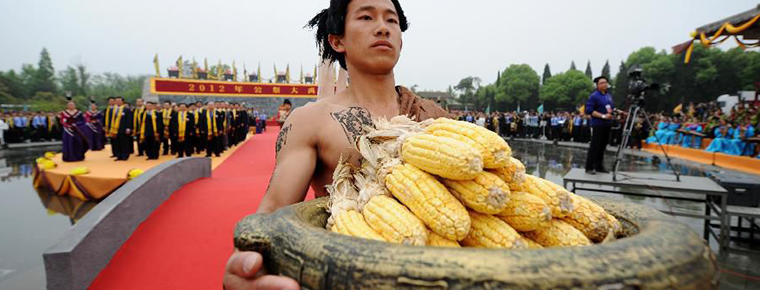
-
Tourist Area of Wu Taihu Lake in Suzhou
Wuzhong Taihu Lake Tourist Area in Suzhou is located in the southwest corner of the paradise of Taihu Lake, covering an area of 21.5 square kilometers..
Views: 220 Time 2018-12-06 -
Dazhao Temple Scenic Area in Lhasa
Dazhao Temple, also known as "Zula Kang" and "Jue Kang" (Tibetan meaning for Buddhist temple), is located in the center of the old city of Lhasa. It is a Tibetan Buddhist temple bu.
Views: 123 Time 2018-12-12 -
Taer Temple Scenic Area Xining City
Tar Temple, also known as Tar Temple, was founded in the 10th year of Hongwu Ming Dynasty (1377). Named after the Great Silver Pagoda built in memory of Zongkaba, the founder of the Yellow Religion.
Views: 124 Time 2018-12-12 -
Water Margin City Scenic Area of the Three Kingdoms
The Wuxi Film and Television Base of CCTV is the first large-scale film and television shooting and tourism base in China. Founded in 1987, it is the first theme park in China that combines film and t.
Views: 154 Time 2018-12-18 -
Anxi Tea Grand View Garden
Anxi Tea Grand View Garden in Quanzhou, Fujian Province is located in Fengguan Mountain on the north side of Fengcheng City. It covers an area of 11 mu.
Views: 115 Time 2019-01-02 -
88 Floor Sightseeing Hall of Jinmao Building
Jinmao Tower's 88th floor sightseeing hall, located in Shanghai, China, has a height of 340.1 meters and an area of 1520 square meters. It is the largest sightseeing hall in China at present. It is th.
Views: 1600 Time 2019-01-26 -
Eight treasure pear pot
Babao pear can is a delicious name, belonging to Shandong cuisine. Babao pear cans are exquisitely made and beautifully shaped, mostly for beets at banquets. If high-grade banquet, can be filled in sm.
Views: 236 Time 2019-03-26 -
Ghost Millet Guiguzi Legend
Guiguzi Birthplace Site is located in Salt Food Village, Xiangcaiying Township, Linzhang County. It covers an area of 76 Mu and has a construction area of 26 mu..
Views: 167 Time 2019-05-01 -
regong art
Regong art is an important part of Tibetan Buddhist art in China and a school with wide influence. It originated in Longwu River Basin in Tongren County, Huangnan Tibetan Autonomous Prefecture, Qingha.
Views: 354 Time 2019-06-11 -
Shaoxing opera
Vietnam Opera is the second largest opera in China, known as the second national opera, also known as the "most widely circulated local opera". Some people think that it is the "largest.
Views: 132 Time 2019-07-16 -
Dazhou Sports
By the end of 2019, Dazhou city has a total of 9 stadiums and stadiums, sports lottery revenue of 242 million yuan, and 694 new sports fitness projects for farmers. .
Views: 335 Time 2020-12-20

